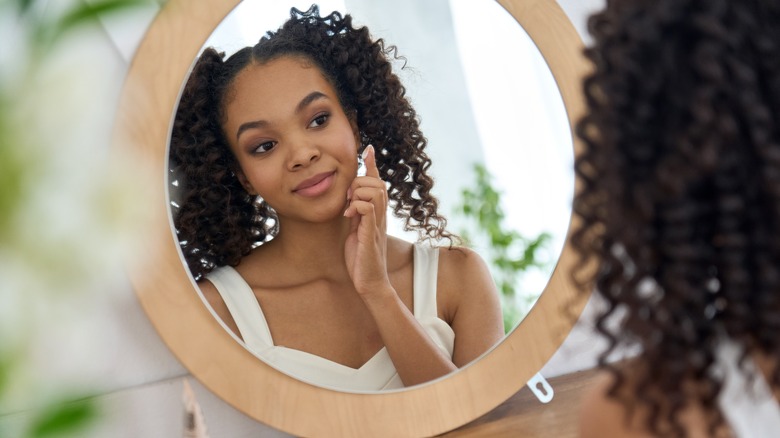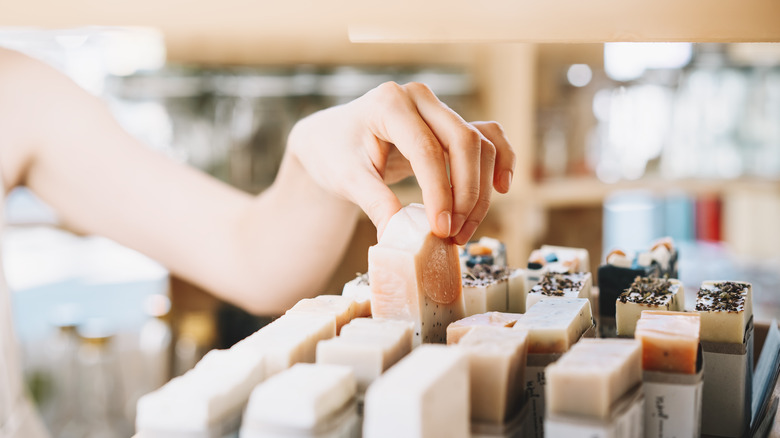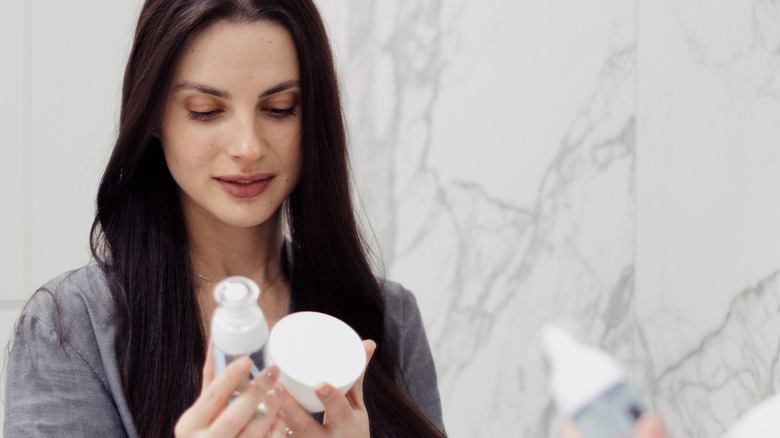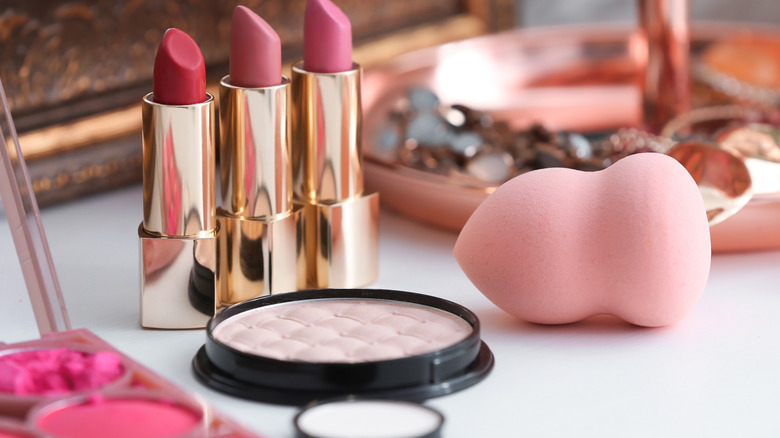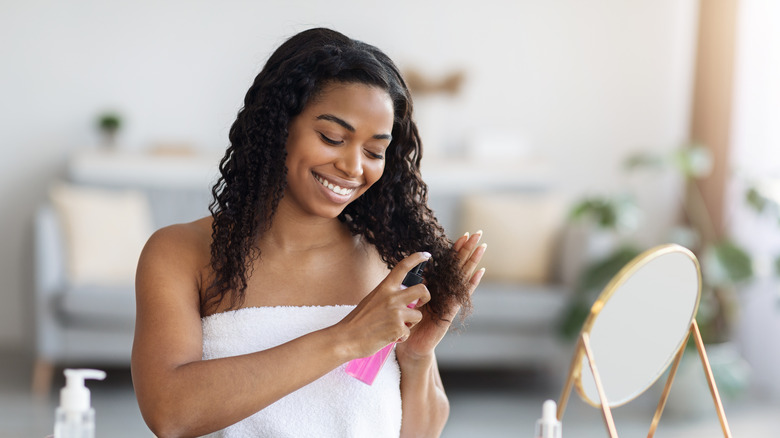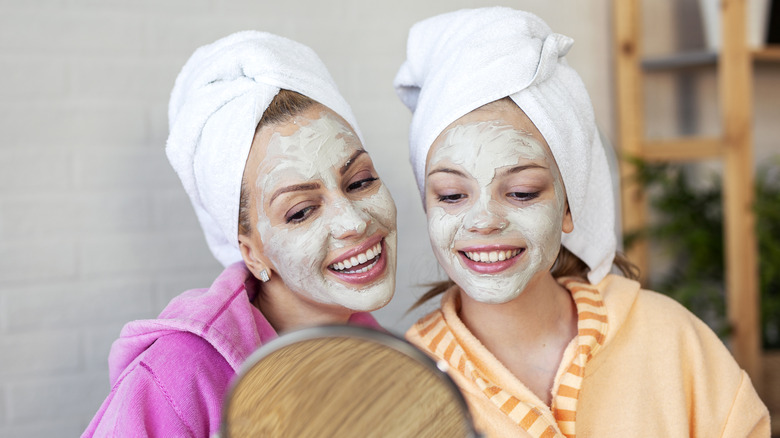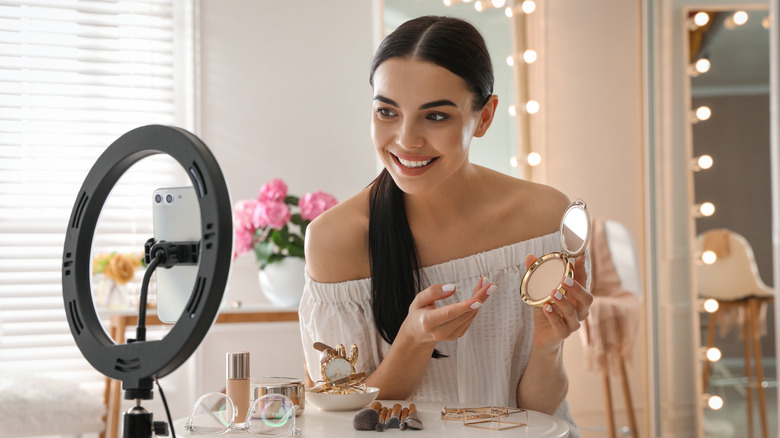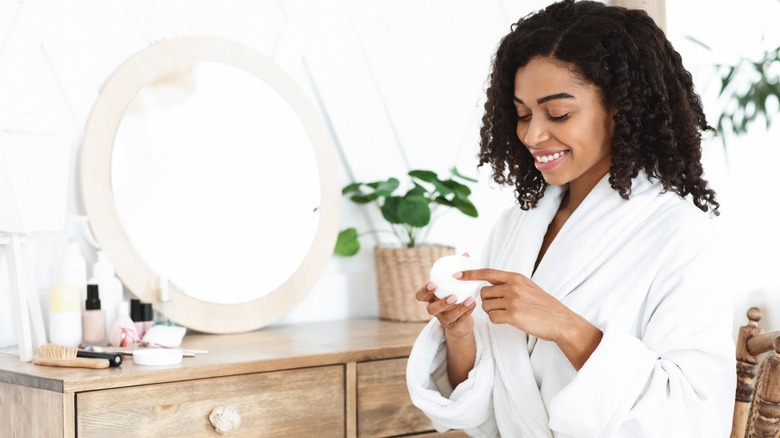Setting The Record Straight On Clean Beauty: Is The Label As Misleading As The Critics Claim?
We may receive a commission on purchases made from links.
Though its recent popularity online makes it seem like a trendy new concept, the idea of clean beauty has actually been around for decades. Photos of vintage Cover Girl advertisements from The Smithsonian suggest the term once was used to describe a more understated makeup style with ingredients to benefit the skin.
Of course, the definition has since expanded, with the term clean now serving as a signal of not only the type of ingredients in a product, but also a company's values, including its stance on serious issues like animal welfare and climate change. Retail Analyst Heather Ibberson explained to Forbes that this isn't a coincidence. "The declaration of a climate emergency has increased consumer awareness and grown demand for ethical and environmentally-friendly products," they told the outlet. "Infiltration of these products alongside wellness and self-care trends has increased the demand for clean beauty." Forbes estimates the clean beauty market could be worth a whopping $22 billion by the year 2024.
But while clean beauty sounds promising, the term and its legitimacy have become a contested topic in the cosmetics and skincare community. Ahead, we're setting the record straight on clean beauty with everything you need to know about the concept.
The clean movement aims to bring higher quality products to consumers
As science and technology have evolved over the years, so has our definitions of what is actually safe to use on our skin and bodies. As it turns out, many cosmetic ingredients once considered harmless actually come with health concerns. One of those ingredients is parabens. A 2018 study found parabens can mimic estrogen when inside the body, potentially increasing the risk of obesity, reproductive organ damage, thyroid problems, and even cancer. One of the most shocking things? Several parabens have already been banned in Europe, but are still legal in beauty products in the U.S. "In Europe, more than 1,300 ingredients are prohibited. But in the U.S., only a [relative] few substances are prohibited by the FDA in formulas," Defne Arikan, CEO of Bryhel Cosmetic Labs, told Yahoo! Life.
Moreover, many common care products that don't fall under the clean distinction have been shown to not be environmentally sustainable. A 2016 study found some sunscreens that aren't considered clean actually contain ingredients like Oxybenzone, which has been found to be toxic to marine life and coral reefs, even bleaching the ecosystem.
And yet, as Dr. Birnur Aral explained to Good Housekeeping, regulations regarding cosmetics haven't really changed much since 1938. In 1978 the Cosmetic Products Regulations legislation came to be, but those standards haven't been updated. Proponents of clean beauty aim to change this. However, as legislation remains pending, many beauty brands have already aimed to meet the consumer demand for 'cleaner' products, with some offering everything from clean face wash and lotion to mascara and sunscreen.
Clean beauty has no real definition
One of the biggest criticisms with clean beauty is the fact that there are no official regulations or guidelines that determine what can and cannot be labeled as clean. And though there is some consistency among what wouldn't be clean – many clean beauty products are free of chemicals like formaldehyde — there is no formal list of ingredients that have to be omitted from a product for it to receive the distinction.
This means that companies are at liberty to determine what constitutes clean, which could be confusing and even misleading for consumers. In theory, a face serum could contain a ton of ingredients that aren't sustainable, but still be thought of as clean because it doesn't contain parabens or any of the chemicals easily recognizable as bad for skin. As Ashlee Piper, sustainability expert and author, told Refinery29, "[The term] can be slapped onto anything without any validation, verification, monitoring or repercussions if it's not actually true."
Clean doesn't always mean natural
Okay, so maybe clean doesn't have any clear definitions about what a product can't contain, but at the very least one can say clean means what is there is natural, right? Unfortunately, this is a common misunderstanding. Even though clean is frequently used interchangeably with organic and natural, they are not the same thing.Washington Post points out that many companies that sport a clean beauty label on their products allow what has been termed 'safe synthetics' in their formulations. This includes ingredients petrochemicals and silicones. But as Au Naturale points out, even the term safe is misleading and can have varying definitions. Many ingredients that are safe to put on human skin are not actually safe for the environment. In other words, even if a product goes as far as to be considered organic, or even green, that still doesn't automatically qualify it to be clean. A product could be made from completely naturally-derived materials but come in a single-use plastic container.
Because of this, consumers who are committed to natural and organic routines need to do their research before assuming clean means they're getting a natural product. And, even then, it's also important to note that just because a product can be proven to be natural, that doesn't necessarily mean it's good for you or even safe to use on your body. Hey, soil is natural, but that doesn't necessarily mean it will make a great addition to your beauty routine.
Accusations of greenwashing
Along with confusion over what the term clean means, many clean beauty brands and supporters have been criticized for greenwashing. The term refers to a misleading marketing tactic where company advertises a product in a way that suggests it is environmentally friendly or better-for-health just to appeal to consumers — even if it isn't completely accurate. An examples would be an eyeshadow is made using natural and recyclable materials, even if only 10% of it is.
The other issue with clean beauty phenomenon is it has created a widespread misbelief that a product must be clean to be good. As Jen Novakovich, science communicator and cosmetic chemist, explained to Refinery29, the very notion that some products are clean suggests others are dirty, which is a form of fear mongering that enables companies to sell more expensive products that haven't even officially been branded clean by a governing body. Indeed, many brands have used the label to justify charging a premium on their products, since they don't rely on synthetic ingredients. Annie Jackson, cofounder and COO at the clean beauty retail chain Credo Beauty, explained Allure, "We ban dozens of [synthetic] ingredients from our stores that are cheaper and easier to formulate with. And whenever possible, our brands strive for sustainable packaging and formulas, which drive up prices." Even Goop's clean beauty promise advertises a "luxurious" experience. This has made clean beauty less accessible to those with lower incomes.
Not all synthetic ingredients are bad for you
A large part of a clean product's appeal is the claim that it is free of synthetic ingredients or scary sounding chemicals. While that sounds great, it raises one important question: Who is to say all man-made ingredients are toxic, or that natural ingredients are actually better? In fact, per aesthetician Kristina Holey, sometimes the opposite is true. Speaking to Harper's Bazaar, she explained, "There are certain cases where a synthetic will not only prove to be 'cleaner,' but provide results in a more effective way than a non-isolated natural compound that is not 100 percent pure." Though she added it's still important to confirm any synthetic items in your products do actually serve a purpose.
Aesthetician Britta Plug also pointed out to the publication that there are sometimes even drawbacks to products with natural ingredients. For one, natural ingredients and preservatives don't stay active as long as synthetic ones. That means depending on the product, you may actually see better results from something that's not actually classified as clean. Moreover, there hasn't been as much research and testing into natural cosmetic products as there has been into lab-made ones.
Finally, it's worth noting that while many chemicals are bad for us, not all of them are. As dermatologist Dr Anjali Mahto told to Refinery29, "Even water is a chemical. We are walking, talking mishmashes of chemicals. Even plant-based skincare has chemicals in it."
Clean doesn't always mean environmentally friendly
Similarly, many think that opting for clean-labeled products automatically means they're buying something eco-friendly and doing their bit to save the planet, but that's not exactly the case. Creative Researcher at The Future Laboratory Livvy Houghton admitted to Refinery29 that although plant-based products tend to be biodegradable, it doesn't always mean they're that sustainable, which means they may not be doing as much good as we're led to believe. "The idea that 'natural' is always synonymous with 'environmentally friendly' is being dispelled," she confessed.
Equally, because the term clean doesn't have a clear standard for packaging or ingredients, what gets classified as clean for the environment remains up for debate. For instance, many products containing palm oil are considered clean, though the harvesting of palm oil is responsible for devastating levels of deforestation throughout the world, per The World Wildlife Fund. Meanwhile, some of the factories that produce clean beauty products are just as guilty of contributing to carbon dioxide emissions. These facts call into question how much the term means for environmental friendliness.
Beauty experts are still divided over whether clean beauty has any value
While there are plenty of experts who recognize and support the clean beauty concept, others think it's a useless term. Speaking to Image Magazine, founder of Cosmetic Information Network Sam Fender dismissed clean beauty as mere marketing fodder. Similarly, cosmetic chemist Perry Romanowski told NPR they believe the only reason the word 'clean' holds any value in the beauty world is because it relies on causing people to believe all chemicals are bad, which isn't accurate. It doesn't help that as of 2023 there are still no government regulations or official parameters defining what 'clean' means for products 'in the US. And even though stores like Sephora have their own system for adding a "clean" label to their products, NPR pointed out pretty much any brand can call its product 'clean' if it wants.
Dermatologists like Dr. Alex Kuritzky would likely agree with that sentiment, as they told Best Health their decision to recommend a product to their clients is based more on its benefits, not if it could be considered clean. Speaking to the outlet, they said, "I'm more interested in the activity of the ingredients and whether the product is going to deliver what it states." If a product happens to have a clean label, great. But it's not a deciding factor for them.
What you really need to look out for in a product
While there's no universal consensus on clean beauty's validity, following its principals won't exactly cause you harm. At the end of the day, a clean beauty routine isn't about a fancy label, but simply choosing to not use products with ingredients that harm humans, animals, or the environment. Those who want to follow these practices and define clena on their own terms should conduct their own research into companies and their products to know exactly what they're getting before buying. Fortunately, there are ways to make your research easier. The Good Face Index Restricted Toxins List and Beauty Counter's The Never List detail some of the ingredients you should avoid at all costs. Amongst the absolute no-goes? Anything with Chemical UV filters like Octinoxate and Oxybenzone, Sodium Laureth Sulfate (SLS), and Formaldehyde. PETA, meanwhile recounts brands that are certifiably vegan, while Earth.org features a list of brands with a proven track record of sustainability.
